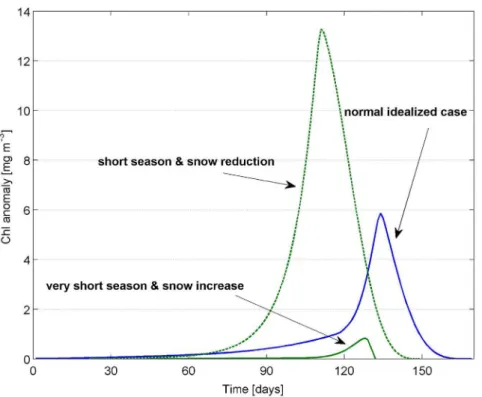Sea ice biogeochemistry: a guide for modellers.
Texto
Imagem
![Table 1. List of sea ice biogeochemical models and their components, revised and extended after [20].](https://thumb-eu.123doks.com/thumbv2/123dok_br/16381036.191914/2.918.92.834.718.1068/table-list-sea-biogeochemical-models-components-revised-extended.webp)

![Figure 4. Model set up. Prescribed properties (lines) of a typical season of first-year ice in the low Arctic based on the observations (markers) reported by [43]: A) irradiance and Photosynthetic Available Radiation (PAR), B) snow and ice thicknesses, C)](https://thumb-eu.123doks.com/thumbv2/123dok_br/16381036.191914/5.918.87.791.456.1029/prescribed-properties-observations-irradiance-photosynthetic-available-radiation-thicknesses.webp)

Documentos relacionados
complexity to meet the needs of children and adolescents with mental health problems and ideally the bulk of the services should be provided in the community 38 The model
We used a discrete choice model to estimate site selection by adult radio-tagged walruses relative to the availability of the caloric biomass of benthic infauna and sea
In this study we use the Pelagic Integration Scheme for Carbon and Ecosystem studies (PISCES) global ocean- biogeochemistry model (Aumont and Bopp, 2006) to exam- ine the response
Relative sea level variations due the gravitational and Earth rotational e ff ects of recent (2000–2008) ice mass losses from di ff erent sources; (a) Greenland, (b) Antarctica,
main aim of this work is to derive the eigen-frequencies of the system, which includes the buoyant, elastic ice-shelf and the sea water under the ice-shelf, implying that, in
A 2.5-dimensional climate model of intermediate complexity fully coupled with a 3- dimensional thermo-mechanical ice sheet model is used to simulate the evolution of major
Hourly sea level data from tide gauges and a barotropic model are used to explore the spatial and tempo- ral variability of sea level extremes in the Mediterranean Sea and the
Diante do caso, foi realizada discussão com heart team optando-se por tratamento conservador da lesão, mantendo a paciente com anticoagulação plena por 48 horas e
